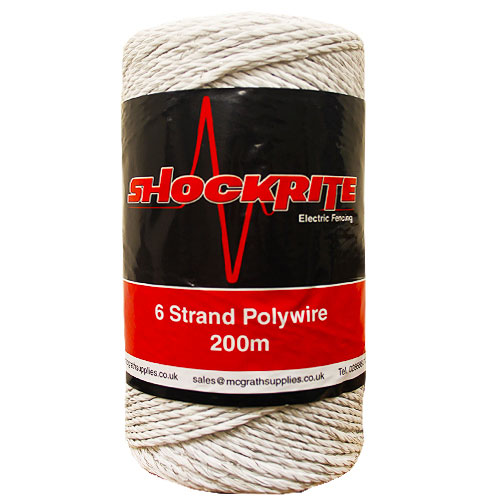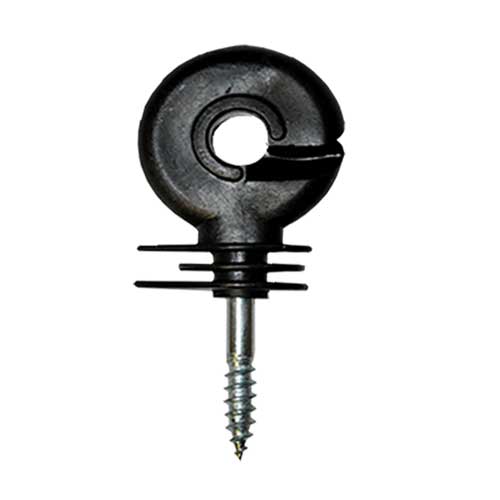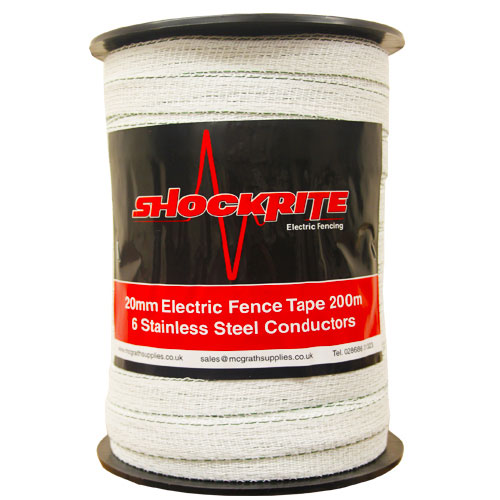Electric Fencing Help & Advice
Understanding how an electric fence works can hugely help ensuring that yours is running effectively and what could negatively affect it. When setting up a fence for the first time is very important
Having several years experience working in the electric fencing industry, we have a good understanding of what any beginner needs to know when setting up an electric fence for the first time (such as ), and how to deal with an electric fence energiser for the first time. Still unsure? Let us know and our electric fencing experts will give all the help & advice that you need.
This comprehensive guide will assist in the basic understanding of how an electric fence works. We will take you though basic set-up of the electric fence. Electric fence energiser maintenance, post spacing, and troubleshooting guides are also available.
If you have any further queries after reviewing our guide please do not hesitate to contact us.
How An Electric Fence Works
Every electric fence is based around three main components. These components are:
An electric fence energiser (to generate pulses of electrical current),
Fence Conductor (to conduct the current),
And an earthing system (to return the current back to the energiser).
An electric fence works by sending short, high voltage pulses of electrical current along the fence from the energiser. When an animal touches the fence it closes the circuit and sends the current back to the energiser through the earthing system. This pulse will pass through the animal very quickly, so the animal will only feel a brief shock. This will make the animal move away from the electric fence immediately. The animals will dislike the sensation, deterring them from going near the fence. Most animals will receive a shock within the first week of the fence being erected, and avoid the fence from then onwards. Electrical fencing is the safest and most reliable solution when it comes to securing and keeping your animals or livestock safe.

Electric Fence Components
To have a safe and fully functional electric fence you will need several components:

The Conductor (wire, tape, rope or netting)

You can use various types of wire or conductors for your electric fence. For a permanent set-up steel wire, either single or multi-stranded, is the best option. This wire is strong, durable and highly effective at conducting electricity. Although steel wire is the heaviest and hardest to work with of the options you have available.
An easier and lighter alternative is polywire. This is a UV-stabilised polythene twine with at minimum of three strands of stainless steel wire woven into it. This would be commonly use for temporary, semi-permanent fencing and strip-grazing. Polyrope can be used for a permanent fence set-up.
Polytape is made of polythene strands woven into a ribbon with stainless steel wires. It comes in a wide range of colours and widths. It can be used in both permanent and temporary fencing and is highly visible, although it can be more vulnerable in areas with high winds.
Electrified netting is also an option and is made in a range of mesh sizes for use with different animals. These are usually set up with the horizontal strands being polywire, while the vertical strands are plain polythene. The main uses for this are temporary fences and strip-grazing.
Insulators

The purpose of insulators is to stop the fence wire from touching the post or stake, so there is no electricity leaking back into the ground.
High quality electric fence insulators should dry easily to prevent moisture collecting into nooks and cracks. Otherwise the current would leak in an ‘arc’ which reduces the effectiveness of the fence.
It is also possible to use offset insulators to hold the fence away from the fence posts. This has the benefit of stopping the animals causing damage by biting the posts, leaning or rubbing against the posts. This will add to the life of the fence posts.
Electric fence wire or rope are generally used with a variation of ring insulator.
Tape insulators securely hold a section of electric fence tape in place. Tape tensioners can also be used to remove any ‘sagging’ on the electric fence line, therefore reducing contact with surrounding vegetation. Heavy contact with vegetation will cause the power to ‘leak’ from the electric fence resulting in a smaller shock to an animal when it makes contact with the fence. For this reason we recommend regular maintenance of vegetation to ensure optimal electric fence performance.
Earth Stakes
To allow any electric fencing to work correctly it needs to be properly earthed. To do this an earth stake is inserted into the ground and connected to the energiser.
This ensures the power returns through the ground and back to the energiser whenever an animal completes the circuit when in comes in contact with the fence.
Stakes and Posts
A permanent fence would most commonly be set up using timber fence posts with insulators attached. While a temporary fence would normally use metal or plastic stakes, also having anchor posts at the beginning and corners to take the strain.
Posts and stakes come in different heights and with different spacings to suit which animals or stock the fence will be used to keep. More info on Electric Fence Maintenance & Post Spacing.
Fence Testers
Electric fence testers can be used to take reading at any point along the fence, this allows you to make sure the the flow of power is steady and constant through the fence. A common style of this would be a lamp tester. This tester works by lighting up small LEDs, the more LEDs that light-up, the more power is going through the fence.
Fencing Materials

For the fence itself, several materials can be used. Smooth steel wire is the material most often used for electric fences, ranging from a single fine thin wire to a thicker, high-tensile (HT) wire. Less often, woven wire or barbed wire fences can be electrified, though such practices create a more hazardous fence, particularly if a person or animal becomes caught by the fencing material (electrified barbed wire is illegal in some areas).
Alternatives like synthetic webbing and rope-like fencing materials woven with fine conducting wires (usually of stainless steel) have become available over the last 15 to 20 years, and are particularly useful for areas requiring additional visibility or as temporary fencing. This is commonly know as polywire, rope or tape.
The electrified fence itself must be kept insulated from the earth and from any materials that will conduct electricity and ignite or short out the fence. Fencing must therefore avoid vegetation, and cannot be attached directly to wood or metal posts. Typically, wooden or metal posts are driven into the ground and plastic or porcelain insulators are attached to them, or plastic posts are used. The conducting material is then attached to the posts.
Electric Fence Safety
A well maintained and correctly installed electric fence is safe for humans and animals. However there are several rules that must be adhered to:
- An electric fence must be constructed in a way that is unlikely to lead to the entanglement of animals or persons.
- You should never electrify barbed or razor wire.
- If the electric fence intersects a footpath or highway you must provide a non-electrified gate or stile so the fence can be crossed.
- If the fence is to be installed along a public path or highway warning signs must be displayed at a minimum of 10 metre intervals.
- You must avoid running electric fences parallel with any overhead power or communication lines, as this could cause dangerously high voltage on the fence line.
- If the fence must cross overhead power or communication lines you must do so a right angle and ensure the fence does not exceed the height of two metres.
- You must never use electric fencing where there is likely to be small children or infants.
- You must never use electric fencing anywhere that there is likely to be bare feet on wet ground i.e. near a swimming pool.
- An electric fence should not be supplied power from more than one energiser at any time.
- If setting up more than one electric fence, a minimum of two metres must be given between the fences.
- Each energiser in use should be connected to a separate earth stake. No household wiring or plumbing should ever be used for earthing.
- Connection leads should never be installed within the same conduit as data cables, communication cables or mains supply wiring.
- Lightning strikes are common on electric fences during thunderstorms. This can cause a fire risk and can damage or destroy the energiser. You should disconnect the energiser and stop power going to the fence during these extreme weather conditions.
- If mounted outdoors it should be mounted on a substantial structure in a position free from the risk of mechanical damage.
